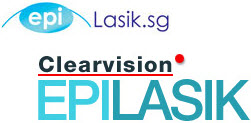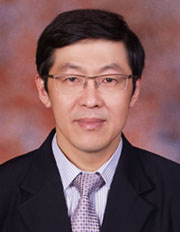Directory:EpiLasik
| Epi-LASIK | |
 | |
| Slogan | A Vision for Tomorrow.The satisfaction is unparalled. |
|---|---|
| Type | Private Company |
| Founded | 2007 |
| Headquarters | Singapore |
| Key people | Dr. Tony Ho, Ophthalmologist and Director of LASIK services |
| Industry | Epi-LASIK Surgery Lasik Eye Surgery |
| Contact | 6 Nutmeg Road, Nutmeg Court, (Behind Lucky Plaza, next to Mount Elizabeth Hospital), Singapore 228337 +65.6100.2211 Web: [1] |
| Reference | NAICS: 32311, 32312 Region: Singapore Latitude: 1.30459 Longitude: 103.83465 |
www.epi-lasik.sg was established in 2007 stemming from a personal desire by Dr. Tony Ho, Ophthalmologist and Director of LASIK services, to afford each and every individual the opportunity of a reliable, safe, and efficacious means of permanent vision correction at a fair price.
Combining years or expertise with the excimer laser technology, Dr. Ho performs each Epi-LASIK surgery with utmost dedication, aspiring to deliver accurate, uncompromised visual outcomes for just about anyone who’s ever considered LASIK and been found unsuitable for the procedure.
With a mission to provide tomorrow’s solution for the myopic of today, Dr. Ho and his committed team at Eye Care Clinic look forward to rediscovering with you the vision you always desired.
Epi-LASIK: A Vision for Tomorrow.The satisfaction is unparalled.
Why Epi-LASIK
An abbreviation for Epithelial Laser In-Situ Keratomileusis, Epi-LASIK is the new frontier in laser vision correction. A sophisticated form of corneal surface ablation, Epi-LASIK is a procedure that involves the use of a blunt microkeratome blade to mechanically separate a thin layer of surface epithelium from the underlying topmost stromal layer of the cornea, leaving the exposed area for laser sculpting. This breakthrough procedure differs markedly from conventional LASIK, which requires an incision or cut to be made into the stromal layer of the cornea, creating a corneal flap which is lifted to expose the stroma for laser ablation. Because Epi-LASIK, unlike traditional LASIK, dispenses with the need for the creation of a deep corneal flap, it circumvents those core problems surrounding LASIK that revolve around the issue of flap creation. For one, Epi-LASIK bypasses any potential for flap-related LASIK complications, such as incomplete cutting of the flap, loss of the cornea flap, shifting or wrinkling of the flap, or even dislodgement of the cornea flap, all of which can lead to a compromised or permanent loss of best corrected vision. In light of the possible dangers of flap creation plaguing LASIK, Epi-LASIK is particularly suitable for those in professions in which there exists a heightened risk of trauma to the eye (such as military or police officers, sports enthusiasts, etc) given that Epi-LASIK eliminates any chance of flap dislodgment.Secondly, because cornea nerve endings are not cut in Epi-LASIK as in LASIK, Epi-LASIK effectively avoids the problem of dry eyes frequently experienced in LASIK patients, an inconvenience which can persist for months or years.Most importantly however, the greatest appeal of Epi-LASIK resides in the fact that this groundbreaking procedure saves at least 100 microns of cornea tissue by moving aside only a superficial layer of epithelium to enable lasering beneath the bed, an impossible feat in standard LASIK in which significant cornea tissue is lost due to the flap creation process prior to tissue ablation.Such a tissue sparing procedure is especially crucial for individuals with high degrees of myopia or thin corneas who would have been unsuitable candidates for LASIK. Furthermore, since the cornea in an Epi-LASIK procedure is left thicker and therefore necessarily stronger, there exists a decreased likelihood of keratoectasia, or the development of an unstable cornea attributable to the removal of excessive cornea tissue. All in all, bearing in mind the merits of Epi-LASIK particularly with respect to issues of safety and its ability to offer hope of a permanent means of vision correction for those with high myopia or thin corneas, this remarkable procedure easily challenges LASIK to emerge victorious in the field of laser refractive surgery.
Epi-LASIK Information
Epi-LASIK is a surface based procedure.
By employing the surface based procedure, correcting your vision will only involve the sculpting the front surface of your cornea with excimer laser. This helps to protect the structural integrity of the cornea and prevent a devastating complication called Cornea Ectasia.
Epi-LASIK does not cut a cornea flap.
Unlike the Microkeratome LASIK or the Intralase LASIK, Epi-LASIK does not require the creation of a cornea flap. Examples of cornea flap related complications that Epi-LASIK avoids are:
- Cornea Flap Wrinkles
- Cornea Flap Dislodgement
- Improper Creation of Cornea Flap
- Inflammation / Infection of the Cornea Flap
Epi-LASIK is suitable for active Sportsperson
Your eyes will be safe, even if you participate in vigorous or contact sports about two after surgery. Unlike LASIK, you need not fear cornea flap wrinkles; you need not fear cornea flap dislodgements; you need not have any fear.
Epi-LASIK is less likely to cause dry eyes.
By cutting a cornea flap, LASIK also cuts cornea nerves and cause dry eyes. If you do not have a dry eye problem, we suggest that you should not create one. Your cornea will not be cut during Epi-LASIK.
Epi-LASIK may be a second chance for patients with thin cornea.
If you have thin cornea, you may already have been rejected for the LASIK procedure. Epi-LASIK may be your second chance to regain your vision. A big portion of our patients do not have thin cornea, but have already chosen Epi-LASIK. We believe you should too.
Epi-LASIK may be a better choice for patients with high myopia.
If you have high myopia, much more of your cornea will be used for laser sculpting. With Epi-LASIK, there is no need to create a cornea flap. Therefore, laser sculpting can begin right at the surface of the cornea, leaving the cornea with more cornea tissue after surgery.
Epi-LASIK may just be the Ultimate Safe LASIK
Your eyes are probably the most important sensory organ you have. At Clearvision Eye Clinic & LASIK Centre, we advise our patients on all the advantageous and disadvantageous of various Laser Eye Procedures. We believe you should too be advised on choosing a procedure with the most number of advantages relating to the safety and well-being of your eyes – The Clearvision Epi-LASIK procedure.
About Eye Care Clinic
Eye Care Clinic was founded in 1993 by Mt Elizabeth Consultant Ophthalmologist Dr Tony Ho to provide advanced quality private specialist eye care for Singaporeans and foreign patients from the region and around the world. The clinic is now well-established and is a recognized trusted name in Singapore private eye-care. Dr Ho’s views and opinions are frequently sought by the news and media. Indeed Eye Care Clinic has to date treated over 20,000 patients and seen over 100,000 patients’ visits.
About Dr.Tony Ho

Dr Ho MBBS, FRCS (Glasgow), FRCOphth (U.K.), FAMS is the founder and director of NIGHTLASIK. He is a well-known and respected figure in Singapore’s refractive surgery arena. In 2007, the Singapore Medical Journal asked Dr Ho to write a special editorial on “ The Development of Refractive Surgery ” .
Dr Ho passion in refractive surgery gave him a vision to develop the Clearvision LASIK Centre, the first focused dedicated private LASIK facility in Singapore in 2001. The success of Clearvision has spawned the emergence of several similar centres and entirely changed the LASIK landscape in Singapore. So much so that today Singapore is perhaps the world's most competitive LASIK marketplace.
Dr Ho is a recipient of the prestigious Singapore Public Service Commission Merit Scholarship. He has spent a few years in higher specialist training in renowned centres around the world including the Tennant Eye Institute of Glasgow, Scotland, the Moorfields Eye Hospital of London, U.K. and the Bascom Palmer Eye Institute of Florida, United States. In 1990, Dr Ho was awarded the Ministry of Health Higher Manpower Development Plan Scholarship to pursue sub-specialty training. Dr Ho applied and was accepted into the very prestigious Bascom Palmer Eye Institute that has been voted for many years by the respected US News & World Report as the number one eye hospital in the US. Thus Dr Ho is the among the early Singapore eye doctor to have a fully accredited USA eye fellowship certification who were the trail-blazers for many more doctors to follow.
In 1990, Dr Ho published a landmark scientific paper describing a method of iridotomy for angle closure glaucoma patients. His “sequential Argon-Yag laser iridotomy” is now widely employed by doctors around the world as the de-facto standard method of iridotomies in dark brown irides. In 1991, Dr Ho as a Senior Registrar with the Singapore National Eye Centre made a proposal for childhood myopia research that was to be seed for many subsequent landmark scientific papers on the subject. Dr Ho has also authored numerous scientific papers and three books on eye care. His first book, “The Complete Eye Care Book” garnered the Singapore National Book Council Merit Award in 1994. His second book, “18 Steps to Myopia Control” has received 5-star reviews on Amazon.com. His third book, addresses the two ophthalmic issues closest to the public’s heart namely “Childhood Myopia and Lasik Surgery”. As a well-known and established eye surgeon, the local and overseas media such as Reader’s Digest frequently seeks Dr Ho’s views on eye care issues.
Dr Tony Ho is among a handful of eye surgeons in Singapore who are certified to implant both the Verisyse and ICL implantable contact lens for the surgical correction of myopia where Lasik cannot be done.
Dr Ho is always embracing change, innovation and research in ophthalmology. In the field of myopia, Dr Ho is a believer and pioneer of weekend Atropine therapy for childhood myopia control. Dr Ho is also a strong believer in quality and safety in LASIK. In this respect, Epi-LASIK is Dr Ho’s current procedure of choice for quality safe refractive surgery. Since 2005, Dr Ho has been an advocate of Epi-LASIK surgery, a surface-based procedure that is the latest evolution and fastest growing segment of the laser refractive surgery industry.
Dr Ho is an avid sportsman and outdoor sports enthusiast being a former national rower, scout and swimming captain. He is presently focused on completing as many triathlons and marathons as he can! He is a proud father of three kids and attends the International Baptist Church. He enjoys spending his vacations travelling with his family and playing the guitar.
Clinical Team
 Martin Kwan
Martin Kwan
Senior Optometist
Dip Optometry (S'pore),
BSc Optometry (USA),
MSc Clinical Optometry (USA)
Martin is in charge of ensuring the standards and quality of optometric eye checks, as well as performing advanced eye tests.

Annie Sim
Optometrist
Dip Optometry (S'pore),
BSc Optometry (USA)
Annie performs eye tests to determine the refractive status of the eye, as well as prescribing contact lenses whenever necessary.

Lexie Lee
Refracting Optician
OD (Phil)
Lexie is registered with the Optometrists and Opticians Board in Singapore, and performs subjective refractions, eye tests and assists in surgeries. Lexie also performs administrative duties.

Alan Chee
Business Development Manager / Refractive Surgery Counsellor
Alan performs counselling for patients who are interested in Laser Eye surgery. He ensures that patients get undivided attention in our clinic.

Grace Lee
Marketing Manager / Refractive Surgery Counsellor
Apart from performing Laser Eye surgery counselling, Grace is in charge of propagating the benefits of Laser Eye surgery through effective marketing.

Sarah M. Cairo
OD (Phil)
Ophthalmic Technologist
Sarah performs various eye tests, assists in surgeries, and in the administration of the clinic.
Photo gallery
References
External links
<sharethis />

